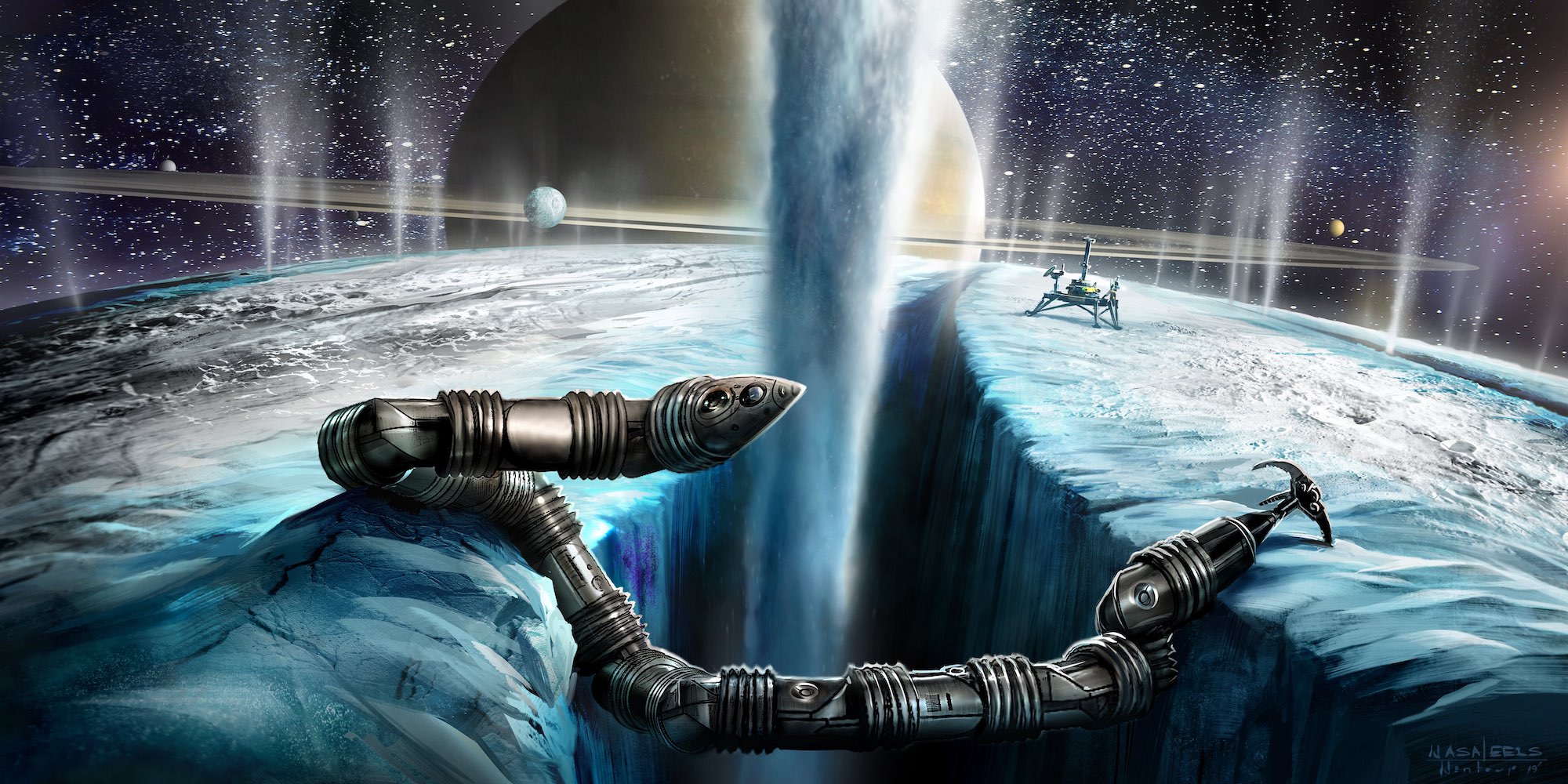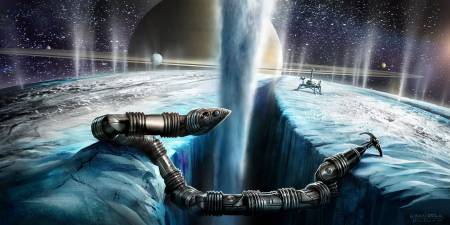
Exploring the solar system for liquid water is one of the largest goals of current space exploration. Enceladus, the sixth largest moon of Saturn and closest moon to Titan, has underground lakes containing a large volume of liquid water. Our goal is to develop a robot that will “snake” its way along the surface of this moon and then through one of the vents from the surface of Enceladus into the underground lake to collect samples, and perhaps search for evidence of life.
So far, the Jet Propulsion Laboratory, California Institute of Technology (JPL) has developed and continues to advance the Exobiology Extant Life Surveyor (EELS) Project. The project ultimately will produce an architecture to carry the latest instruments into the subsurface lake environment. At the core of this architecture is a new snake robot, a mechanism that has many degrees of freedom that it can use to thread through tightly packed spaces accessing locations that conventional machinery (and usually people) cannot otherwise access.
For autonomous traversal over rough surface and sub-surface terrains, JPL and CMU are developing multiple levels of intelligence for the EELS robot. The first level is what we call mechanical intelligence, which involves open-loop parameterized gaits that coordinate the snake’s many degrees of freedom. The second level we call reflexive intelligence, which changes the choice of joint-space controllers and gait parameters in response to changes in the environment. The third we call cognitive intelligence, which includes the higher-level motion planners that must be aware of the robot’s capabilities at the mechanical and reflexive levels. In our proposed work, CMU will contribute to the EELS autonomy capabilities at the mechanical and reflexive levels.

